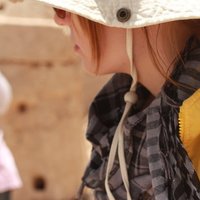- Archaeology, Architecture, Cultural Heritage, Architectural History, Conservation, Heritage Conservation, and 7 moreAnatolian Archaeology, Cultural Heritage Conservation, Roman mortars, Roman Wall Painting, Materials Characterisation, Lime mortars and plasters, and Analysis of Pigments on Ancient Artifactsedit
Research Interests:
All types of stones have been used as building stones, depending on their durability, visual harmony with the intended construction and availability. In the Hellenistic period, as in other periods, tuff was preferred as a building stone... more
All types of stones have been used as building stones, depending on their durability, visual harmony with the intended construction and availability. In the Hellenistic period, as in other periods, tuff was preferred as a building stone due to its convenience – it was easy to extract, transport and use for building. In the present study, three ancient quarries that were the possible tuff sources for the Apollon Smintheus Temple in Çanakkale are investigated by comparing the durability properties of stones in the temple and in the quarries. These properties are determined using physical and physico-mechanical tests, comparing fresh and artificially weathered samples. Microstructural and elemental correlations were found using optical microscopy, stereomicroscopy, X-ray diffraction, scanning electron microscopy, methylene blue adsorption and X-ray fluorescence analyses. The results indicate that temple tuffs and two of three quarries have similar geological engineering and microstruct...
Research Interests:
Research Interests:
Research Interests:
Negative effects of salt weathering on porous building materials will increase because of the global climate breakdown. The addition of crystallization modifiers as desalination technique has attracted considerable scholarly attention.... more
Negative effects of salt weathering on porous building materials will increase because of the global climate breakdown. The addition of crystallization modifiers as desalination technique has attracted considerable scholarly attention. This study builds on this body of knowledge by investigating the effects of potassium ferrocyanide addition on air-lime mortar under different environmental conditions. Three experimental setups were selected with different curing regimes: i) molding, ii) between sandstones and iii) between salt-laden sandstones. TGA-DSC, ion chromatography, MIP and SEM were conducted to evaluate the effects of ferrocyanide on the whole salt content, lime carbonation and mortar microstructure. Its efficiency/durability under salt exposure and wet conditions were also tested. The decay after salt crystallization cycles was evaluated by comparing air permeability, open porosity, water vapor permeability, capillary porosity, ultrasonic pulse velocity, surface hardness and roughness of samples before and after these cycles. Results showed that adding ferrocyanide improved the mortar performance in all curing regimes and its efficiency continued after capillary water uptake and salt attack.
